Report from the Outpost - Flooding Part 1
I’m going to depart from our usual programming for the beginning of this newsletter. I had the unfortunate experience of witnessing the Yellowstone River’s flooding up close and personal and the occasion to talk to the greenhouse businesses that found their entire livelihoods washed away.
Two weeks ago, as I sent off my last newsletter, I told you the Yellowstone River was flooding. I didn’t realize yet how bad it would be. How many homes would flood, or how I would race home via a shortcut that afternoon in order to make it home before the water breached the main road. When the river hit 32,000 CFS (cubic feet per second) it broke a longstanding record. But it didn’t stop until it went over 50,000 CFS. Which is to say, this flood was unprecedented — unheard of in recorded history. Homes well outside of the 500-year flood plain flooded. Even now, we don’t have a collective tally of the damage.
You probably saw it in the news—likely in the tales of damage to Yellowstone National Park or the bridge that fell into the river. While the drama of the flood may be fading news, the reality of its aftermath is still excruciating around here.
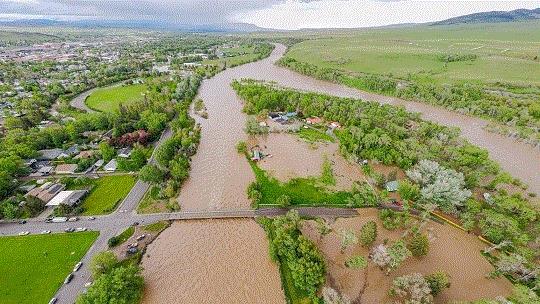 Flooding in Livingston, Montana.
Flooding in Livingston, Montana.
When I drive into nearby Livingston, Montana, where I get my groceries, I see tired people standing over piles of ruined belongings in their front yards. There are heaps of mud, sand, trees, and trash in fields, stuck in fences, and piled high in unsuspecting places. With our Northeast Entrance to the national park closed for the foreseeable future, the tourist-driven economy of our little valley is in peril. But moreover, there are hundreds of people trying to recover their lives.
And in Livingston, there are two neighboring greenhouse businesses struggling to get back on their feet.

Report from the Outpost - Flooding Part 2
The floods hit hard and without much warning for both Montana Roots and Heather’s Garden Service & Flower Farm.
In the case of Montana Roots, a micro greens grower, owner Sam Mascari was busy sandbagging his own home and honestly wasn’t too worried about his own business flooding, he
told the local TV station. But 3 feet of water overtook the facility, damaging seeds, equipment, electrical and a few structures.
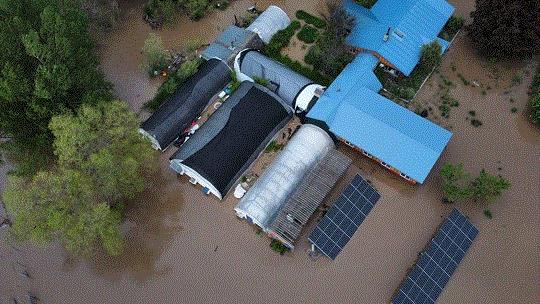 Montana Roots under water.
Montana Roots under water.
At neighboring Heather’s Garden Service—a flower farm, retail garden center and custom container producer—the flood surge brought not just water but 6 inches of mud onto the 12-acre property that Heather Muldoon leases. Friends and neighbors heroically helped rescue many of the plants and containers in her greenhouse, but the losses were still high, from plants and equipment to inputs she’d ordered early in the season.
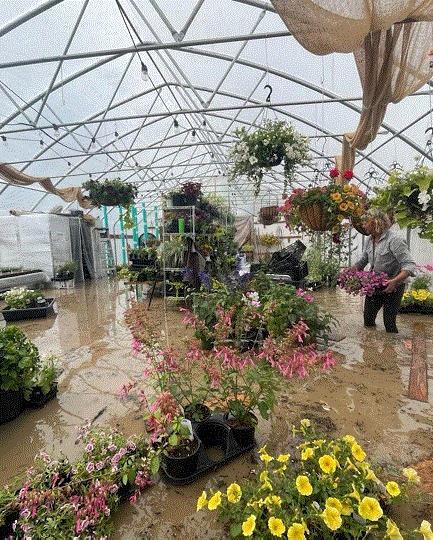 Pallets of plants floating in Heather Muldoon's greenhouse.
Pallets of plants floating in Heather Muldoon's greenhouse.
I talked to Heather this week. She’s still reeling from the event, overwhelmed at how to proceed. Heather spent the last four years cleaning up the run-down property and creating a beautiful location. She had a cut flower CSA up and running and both her cut flower and custom container business was exploding, in addition to her garden center sales.
“Mother nature can be brutal and beautiful, and you’re kind of at her whim,” she says. “There’s so much I’m finding that’s gone, or damaged, or lost.”
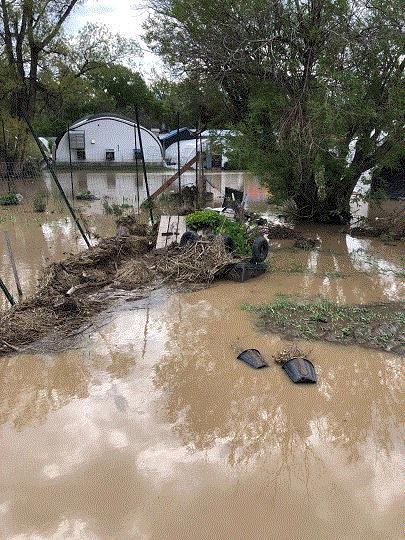 The messy aftermath. There should have been pallets of plant starts in this location.
The messy aftermath. There should have been pallets of plant starts in this location.
Heather says the greenhouses and attached buildings that had been on the property for over 50 years had never flooded, but still, she had discussed potential flooding with neighbors and even a former owner who is a water engineer. She even built a swale behind the greenhouse. But the reality of this event was that nothing was going to keep the floodwaters at bay.
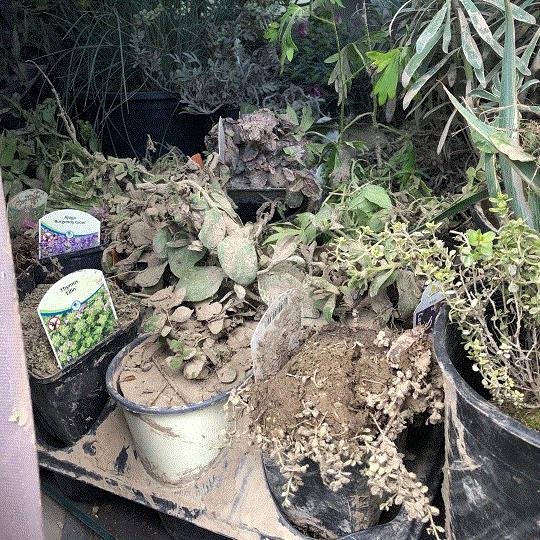 The floods left behind a thick layer of mud and silt at Heather's Garden Service.
The floods left behind a thick layer of mud and silt at Heather's Garden Service.
First up is financially surviving the year: paying the debts on the inputs and the plant orders that were lost, and taking on new landscape maintenance clients in order to keep the staff she’d hired for the flower farm employed. She held an emergency plant sale of the rescued plants in a friends’ yard the weekend after the flood. There’s cleanup. Her brand new greenhouse, though flooded, remained in tact, but her outdoor gardens are another story.
Nearby at Montana Roots, cleanup has begun, and Sam hopes to be back to normal operations for the microgreens within a month. Right now, he’s busy replacing everything that was lost or damaged.
The area is officially a FEMA disaster area, and relief fund applications will be available, but both businesses are leaning on donations to get started in rebuilding.
For Heather, there’s also the haunting question of how she moves her business forward. “This property is magical, and I love it here,” Heather says. But still, she worries these kinds of environmental disasters are the new reality, and she wonders if she should be investing in a property if she’s unsure what the river will do. Maybe part of that is the trauma speaking, but it’s also the kind of question that keeps growers, farmers and ranchers up at night—whether it’s drought, fires or floods.
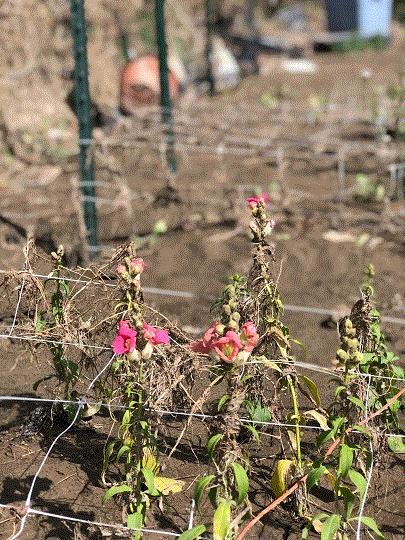 Snapdragons attempting to bloom through the mud in Heather's cut flower gardens.
Snapdragons attempting to bloom through the mud in Heather's cut flower gardens.
The idea of a GoFundMe page makes Heather uncomfortable, but a friend set up a campaign for her, and I’m writing all this today to say that if you feel generous, these fellow plant lovers could use a little help. It’s a small community, and they’ve had lots of muscle on the ground scraping away mud and hauling plants, but now it’s time to rebuild their businesses.
You all are also a great beehive of knowledge and resources, so if you have any expertise or resources you’d like to offer, you can reach Heather at
hgsmontana@gmail.com.

Microplastics Effect on Germination
Many effects of microplastic pollution have been well documented, including how plants can absorb microplastics. And the discoveries still keep coming. Recently, researchers in Japan took a look at how microplastics impact the internal activity of lentil seeds during germination.
They used something called biospeckle optical coherence tomography (bOCT) to track the internal activity. Researchers found that after just six hours, seeds treated with polyethylene microplastics exihibited a substantial decrease in internal activity. The higher the microplastic concentration, the more pronounced the drop in internal activity.
Professor Uma Rajagopalan noted, “Our findings showed, for the first time, that microplastics impede the internal activity of seeds during germination. This is likely due to the physical blockage of pores, which leads to stunted growth at later stages.”
The study appears in
Chemosphere. You can learn more
HERE.
Are Plants Grown Under Solar Panels Better?
When you combine agriculture and solar panels, you get agrivoltaics. And this method of farming under and around solar panels is beginning to gain traction. That’s where the University of Arizona and their Biosphere 2 Agrivoltaics Learning Lab comes in. They’re studying how solar panels affect plants, yield, irrigation needs and more. They also recently looked at how consumers might react to agrivoltaic-grown crops.
Taste test: By taste, tomatoes, beans and squash were all identified as tasting “different” compared to the control samples. Basil and potatoes did not taste different. When asked to rank the taste samples, results varied. The control beans were preferred by most, but agrivoltaic-grown basil, potato and squash won the blind taste test.
Price: They also found that participants would be willing to pay the same or more once they knew that their favorite samples were grown in agrivoltaic systems.
Until next time,

Jennifer Duffield White
jwhite@ballpublishing.com
This email received by 27,408 loyal readers!
Want to be one of the lucky sponsors who reach those readers of GreenTalks? Drop Paul Black a line and he’ll tell you what a bargain it is!
GreenTalks® is a registered trademark of Ball Horticultural Company in the U.S.